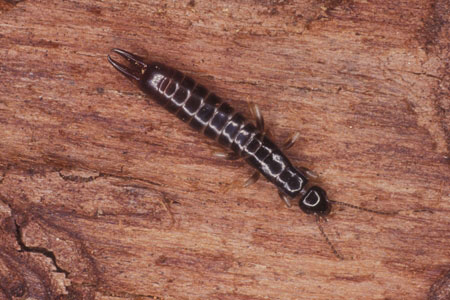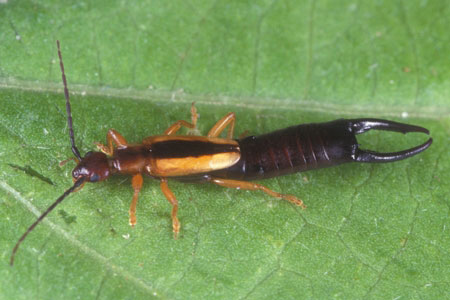Home » Bugs » Other Bugs »
Active Seasons



Earwig Appearance and Size Facts
With large pincers called cerci in the back of their abdomens, an earwig infestation can be a frightening experience for south Florida homeowners. With the right tools and information, you can turn to professional earwig control with Hulett Environmental Services. Our professionals can identify and drive out your infestation once and for all. Some common features of the earwig include:
- Body: Long and narrow with two antennae attached to the head
- Color: Usually dark brown in color
- Size: Approximately one inch in length
- Pincers: Forcep-like cerci extending from the rear of the abdomen; have the ability to pinch but are not venomous and don’t spread disease
- Wings: Hesitant toward flying even though wings are present
Distinguishing Earwigs From Other Bugs
Often compared to silverfish, the way to identify an earwig is through its rear. While silverfish and earwigs have similar features, silverfish have three appendages coming from their rear in comparison to the earwig’s pincer. Due to their size and the fright that might come from their appearance, the best way to properly identify an earwig is through professional assistance.
We provide earwig control in the following locations and their surrounding areas:

Behavior and Habitat of Earwigs
Earwigs are nocturnal as they hide during the day and roam at night for food, specifically fruit, leaves, garbage, and other insects. They often hide in plants, wood piles, shrubbery, the bases of trees, and behind loose boards in the house. While earwigs are not dangerous to humans and do not bite, they can pose a serious threat to your plants and garden as they are primarily outdoor pests.
For reproduction, females make small burrows in the ground and lay their eggs during the spring. The eggs are usually round and either tan or white in color. Unlike other insects, earwigs frequently tend to their eggs, which makes them more likely to appear and remain in your home until the eggs hatch.

Signs of Infestation of Earwigs
There are a few primary signs of an earwig infestation in your home. Earwigs give off a very foul smell when they’re provoked. This smell comes from a brown-yellow fluid that secretes when an earwig is crushed. They feed on plants, so if you suddenly notice a plant not looking so healthy, this could also be a sign of an earwig problem.

Tips for Prevention of Earwigs
Seal off any cracks or crevices throughout your home as these are the primary way earwigs make their way in. Additionally, remove any loose leaves and wood from your home and avoid having any standing water sources such as leaks or dripping faucets. By taking these measures, you can dramatically reduce your odds of an earwig infestation. Reduce leaf liter and make sure not to over mulch or oversaturate your soil or mulch with too much water. This will also help prevent millipedes and roaches from invading.
Getting Rid of Earwigs
While these precautions can help, they are no guarantee your home will remain earwig-free. Any attempts to remove an infestation alone will dramatically vary in results and leave you unnecessarily interacting with earwigs. If you desire the best results for earwig removal, it’s best to call on professional pest control services for help to prevent infestation in the first place.
Effective Earwig Control Solutions
Just call Hulett Environmental Services to get the best earwig control solutions for your Florida home. With a wide range of preventive treatments, our experienced team of expert technicians will dig right into the root of your problem and steer out your infestation for good. Whether you have earwigs or another pest problem, turn to us today by scheduling your free inspection online!



